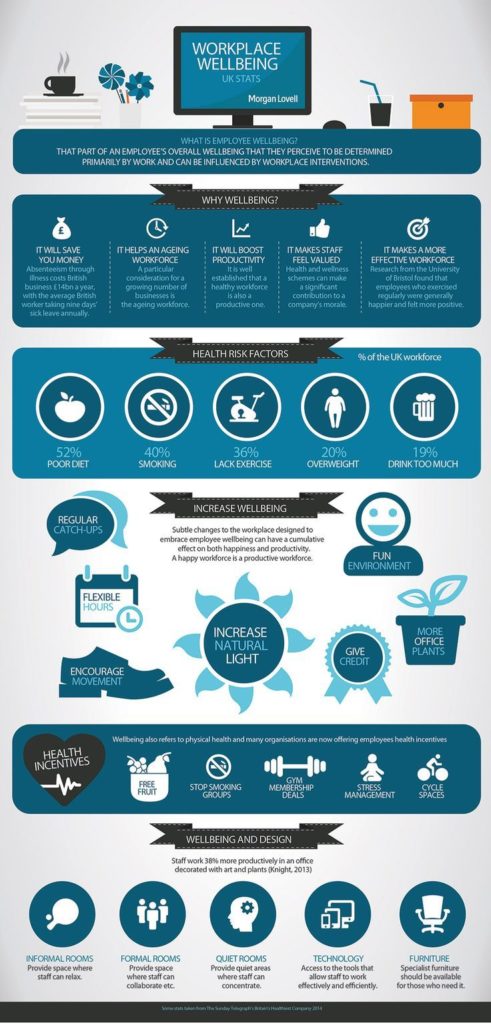It's National Work Life Week! Here are 5 Ways to Make this Week Work for You
The 12th of October is National Work Life Week - but what does it mean? Work-Life Week is an opportunity for organisations to demonstrate the ways in which they provide a work-life balance for their workforce. Organisations have been known to particularly exemplify their flexible working policies during this week because it’s proven rewarding when it comes to the recruitment and retention of talent. However, National Work Life Week has evolved over the years, incorporating even greater importances such as employee wellbeing - which is strengthened and nurtured when employees establish a healthy work/life balance.
Your organisation may still be working from home (as many others are too), and you may even continue working this way indefinitely. So, naturally, you’re probably wondering what’s left to showcase, if not for your impressive flexible working policies. Beyond that, how do you measure and drive your employees’ wellbeing from afar, and how do you celebrate National Work Life Week with a scattered workforce? Don’t worry, we’re coming in hot with the tips!
But before we dive into the focus areas that’ll help you excel this week - and into the future - it’s important to acknowledge the reasons why this week is especially important this year.
If you’ve never given much thought to National Work Life Week before, this is your chance. Here’s why:
- There’s little to no flexibility for employees during this time - which is what makes ‘flexible working’ so attractive. Employees are not just working from home (with the benefit of popping into the office when they like). Their entire home and work life have blended into one which greatly affects employee wellbeing, and they need your support and guidance.
- Employees often struggle to measure or acknowledge the state of their own wellbeing. It is the responsibilities of managers and leaders to measure employee wellbeing and do what they can to improve it.
- At a time when employee wellbeing is threatened in a way it’s never been before - and with the many disadvantages of poor employee wellbeing (i.e reduced productivity and performance, poor employee engagement, bad communication and company culture) organisations need to give special attention to it before it becomes problematic
- This is the perfect time to showcase the way in which you provide SUPPORT to your workforce. Instead of relying on flexible working benefits to drive recruitment and retention rewards (as it was done before during Work-Life Week), use it to show your current and future talent the way in which you support their wellbeing and work/life balance.
5 ways to make National Work Life Week work for your organisation
1. Measure your employee wellbeing
Measuring your employee wellbeing is always important - conducting a survey, for example, provides you with the data you need to make informed decisions. And when you make informed decisions you avoid error, cut costs and make changes that work. Measuring employee wellbeing during times of crisis and while running an organisation on a remote workforce, however, is not just a ‘nice-to-have’, but a MUST. And what better week to demonstrate your care and support for your people’s wellbeing than National Work Life Week? Conducting an employee wellbeing survey, for example, shows your people that you’re open to learning their needs and wants and that you’re open to making changes for their benefit. Beyond that, during this time when you’re leading from afar, it’s difficult to know for sure whether or not your people are coping, and whether they have indeed established a work/life balance. It’s in your interest if they do - because it impacts business success. Conducting a survey opens the floor for communication and says ‘I’m interested in how you are and I want to support you’. It goes a long way for your current and desired talent, but it also goes a long way for the future of your organisation.
2. Run a wellbeing campaign
Poor employee wellbeing will negatively impact core areas of your organisation. From productivity to quality to culture, and most importantly, your bottom line. Because poor employee wellbeing just about guarantees poor employee engagement, it has the power to determine ultimate success or failure. It really is that powerful. So, if you’re serious about improving employee wellbeing, use this week to launch a wellbeing campaign. Begin by establishing your values around wellbeing and your expectations for your organisation and your people. For example, encourage your people to speak up and be transparent; encourage them to take necessary breaks during the day; encourage healthy practices and lifestyle habits. Teach your people what wellbeing looks like at your organisation (in relation to your mission, vision and values) - and perhaps use this week to launch this vision.

3. Demonstrate your support for a healthy work/life balance
During these times, employees are struggling immensely with work/life balance. As mentioned, work and home life is blending into one, and without the separation of the two worlds employees are feeling more overwhelmed, stressed and anxious than ever before. In various workplace studies we’ve conducted, we’ve found most employees to be working excessively and unhealthily - working through their usual lunch breaks, starting work earlier and ‘ending’ later. And this is because there is no separation between work and home life. There’s no clear beginning or end to their work responsibilities and neither for their home/family commitments. But, we also know that some employees feel it’s what their manager/organisation expects of them. When mass redundancies are taking place, employees are more inclined to want to demonstrate their value. If you want your people to establish a healthy work/life balance (because it benefits them, and the organisation), show your support. For example, encourage your workforce to block out their lunch hour in their diaries or find out the best/worst times to schedule meetings based on their home life. Teach them what a healthy work/life balance means, and then lead by example.
4. Encourage your leaders to lead by example
Your leaders need to lead by example and set the tone for what wellbeing and work/life balance means at the organisation. Employees are less inclined to adopt practices that their leaders have not yet adopted. Once leaders work and live out the expectations, employees follow and a culture begins to develop.
5. Praise your workforce for their efforts to improve personal wellbeing
As always, recognition is crucial. It’s highly motivating and it once again solidifies your expectations when it comes to establishing healthy practises that impact one’s work. Check-in with your people, find out how they’re doing, say well done and thank you regularly, and always remain steadfast in your beliefs. Your people need to know that this is not a once-off for the week or a fad that’ll die out - this is something important for them, and important for the success of the business.



